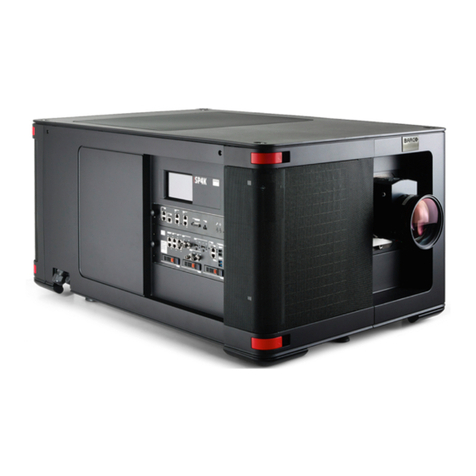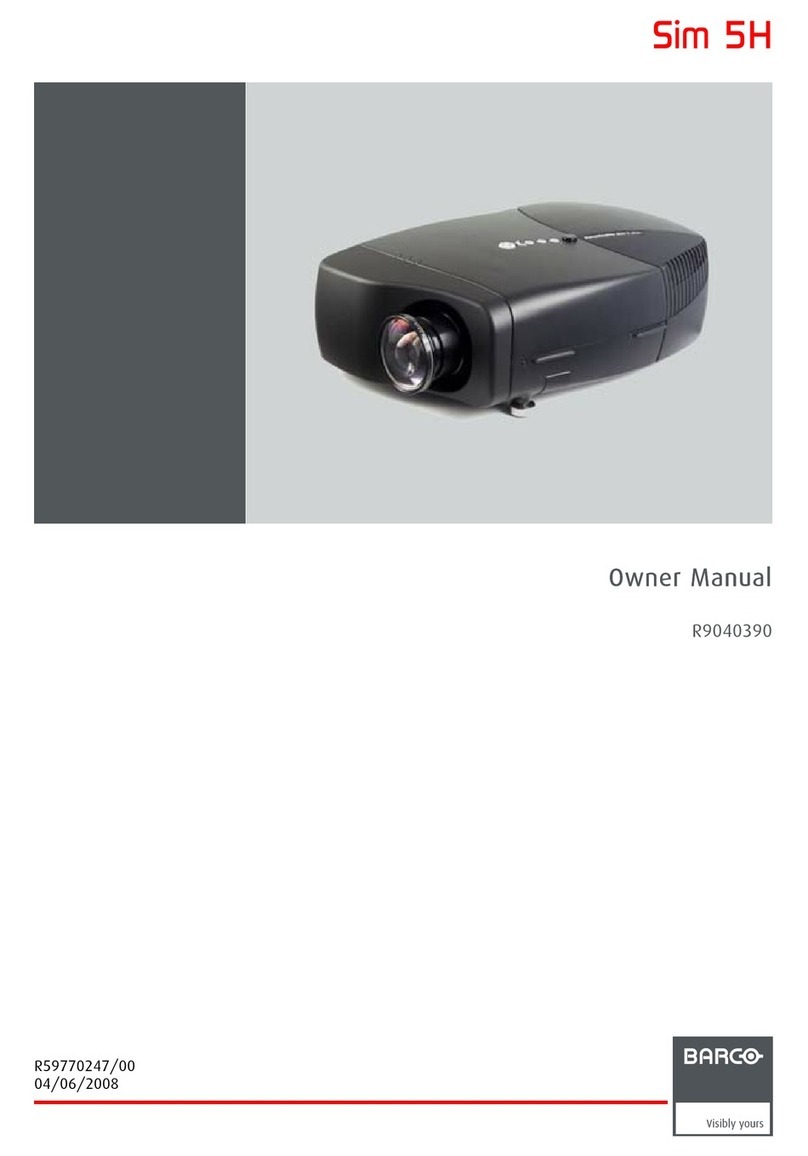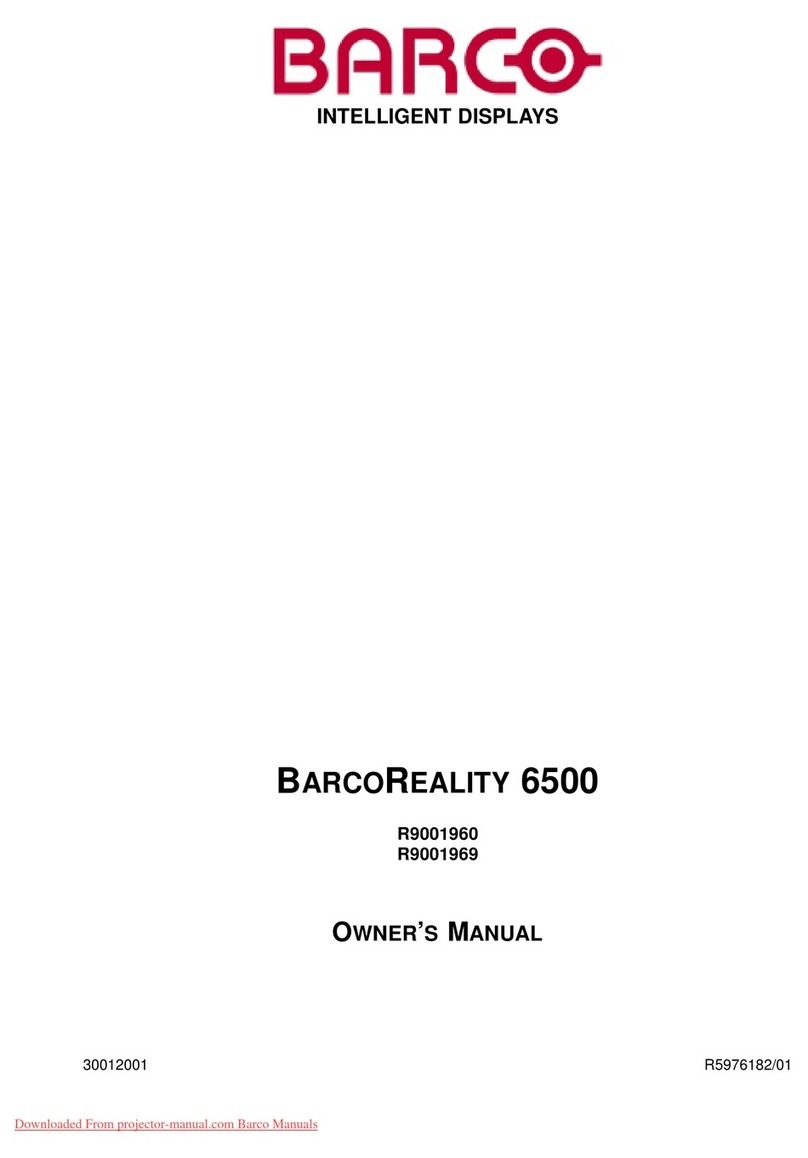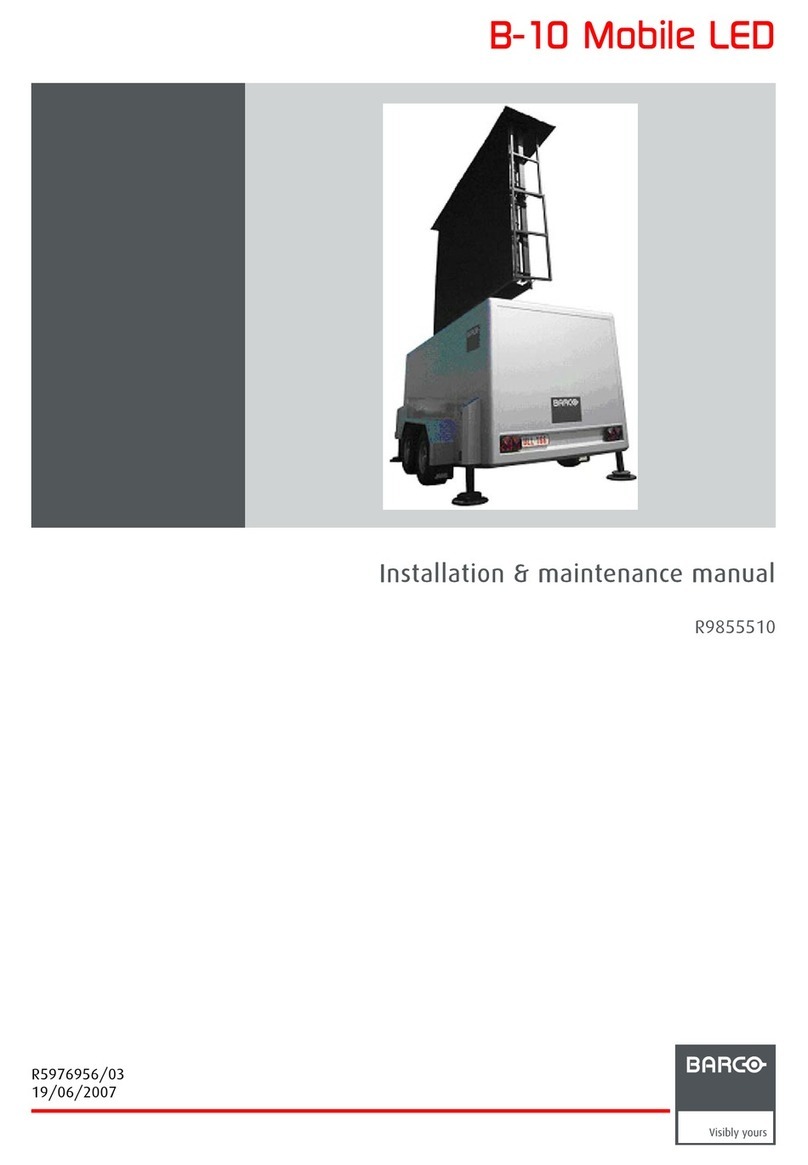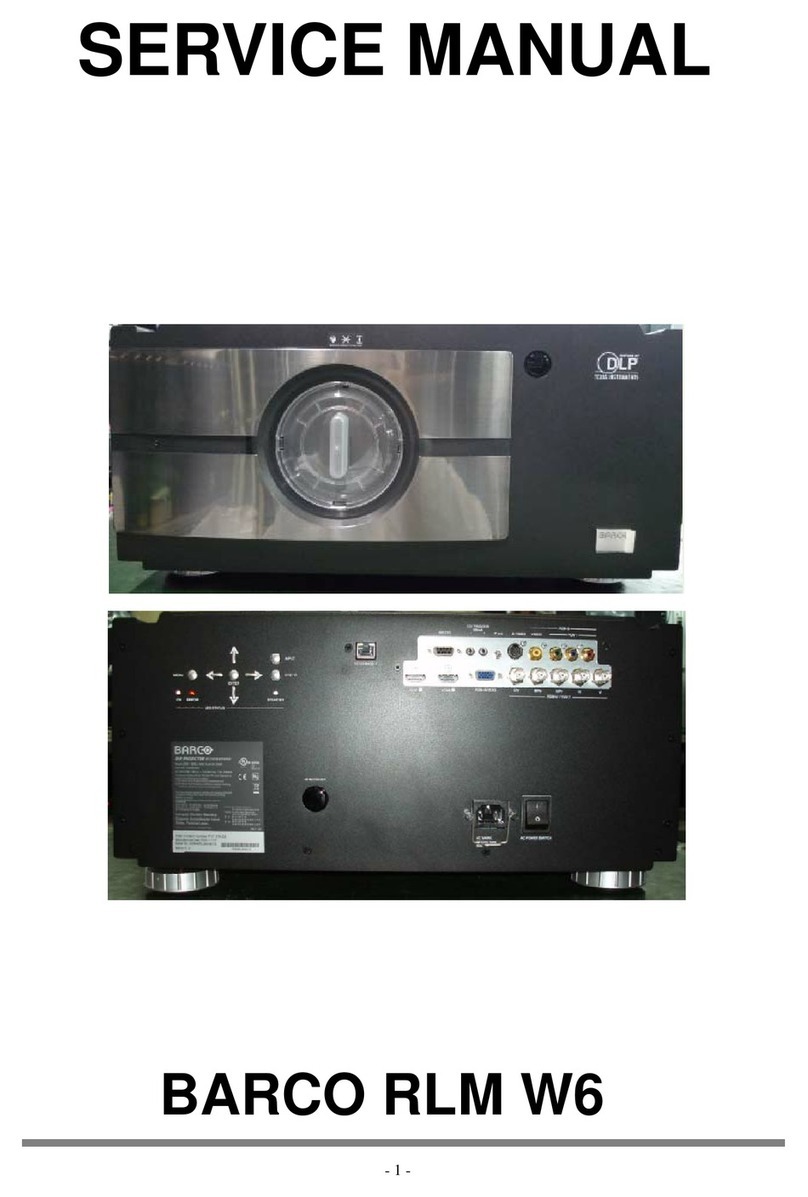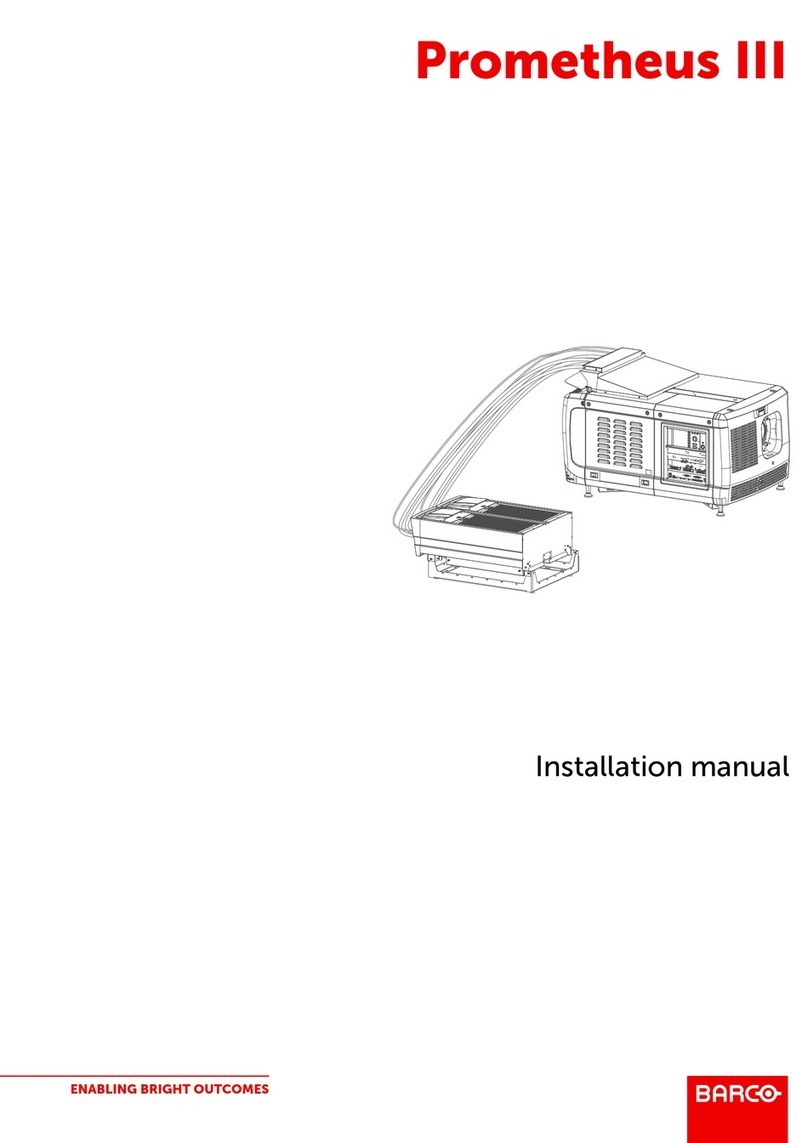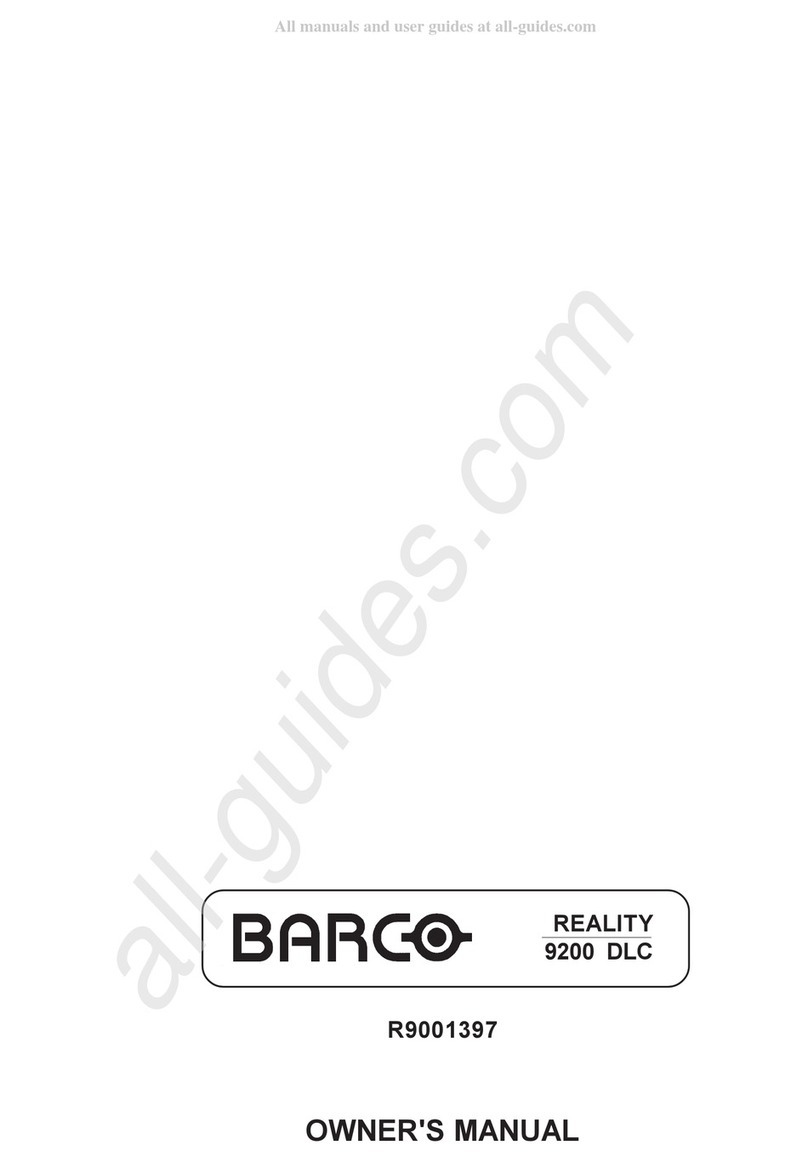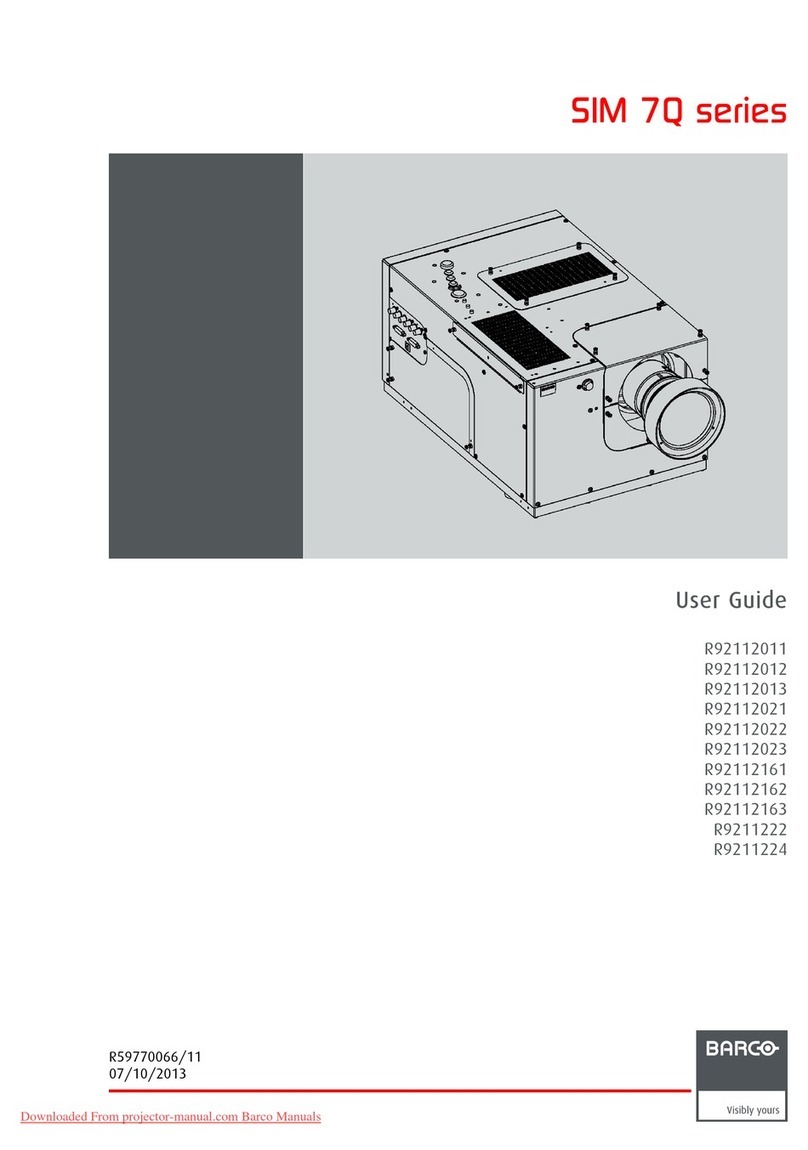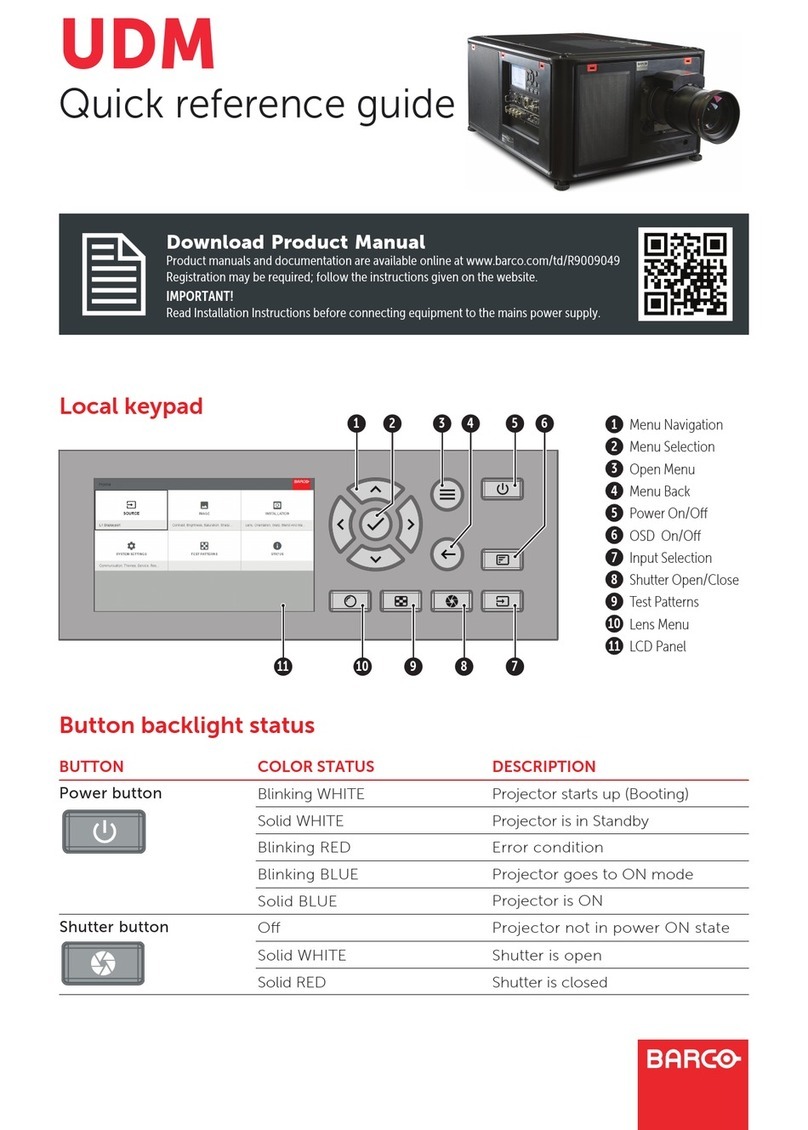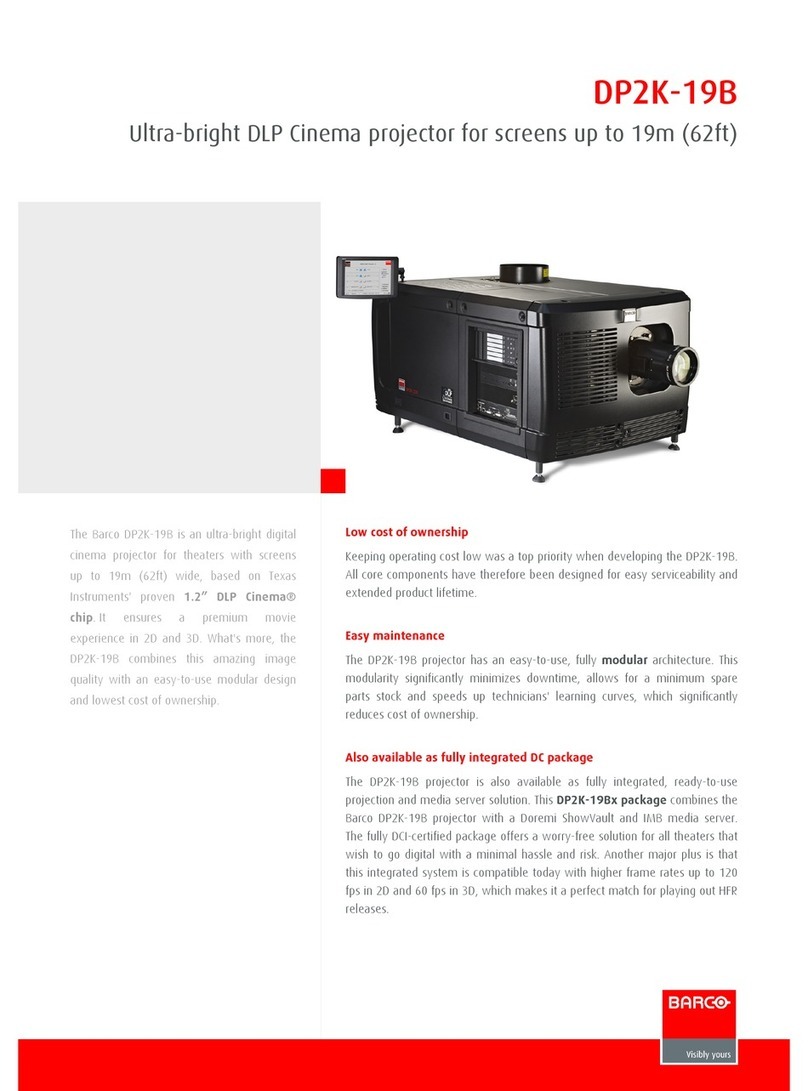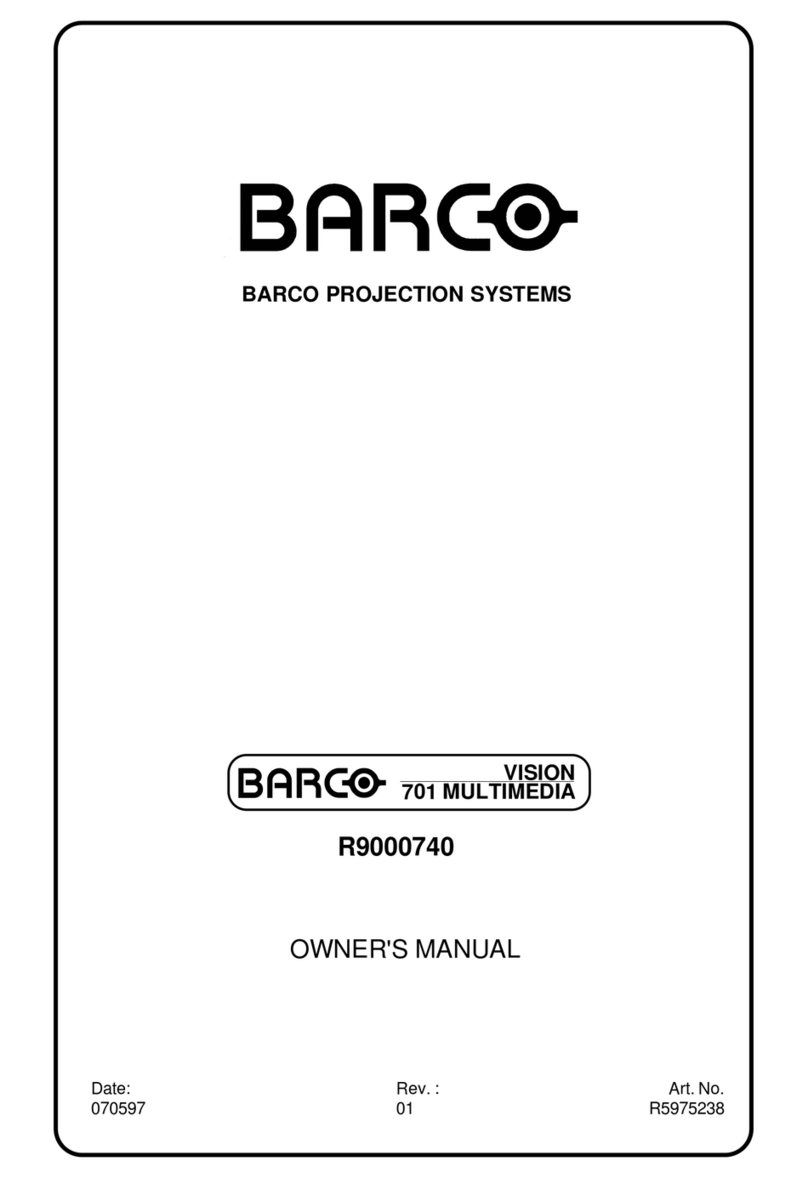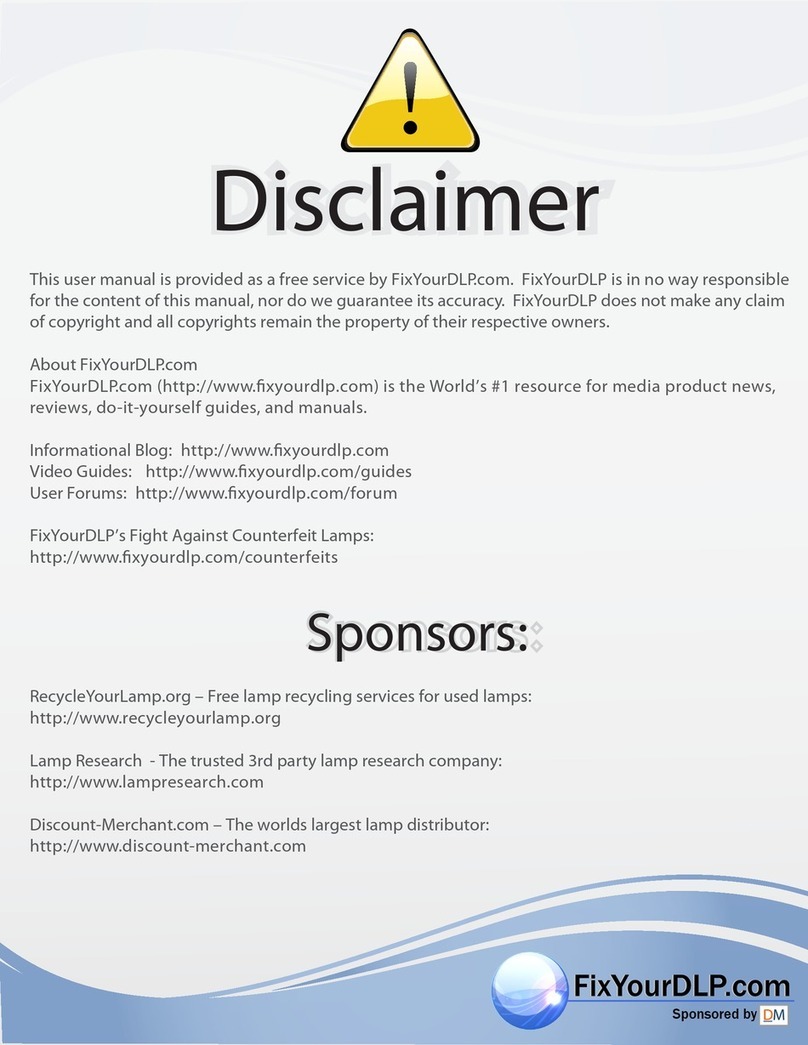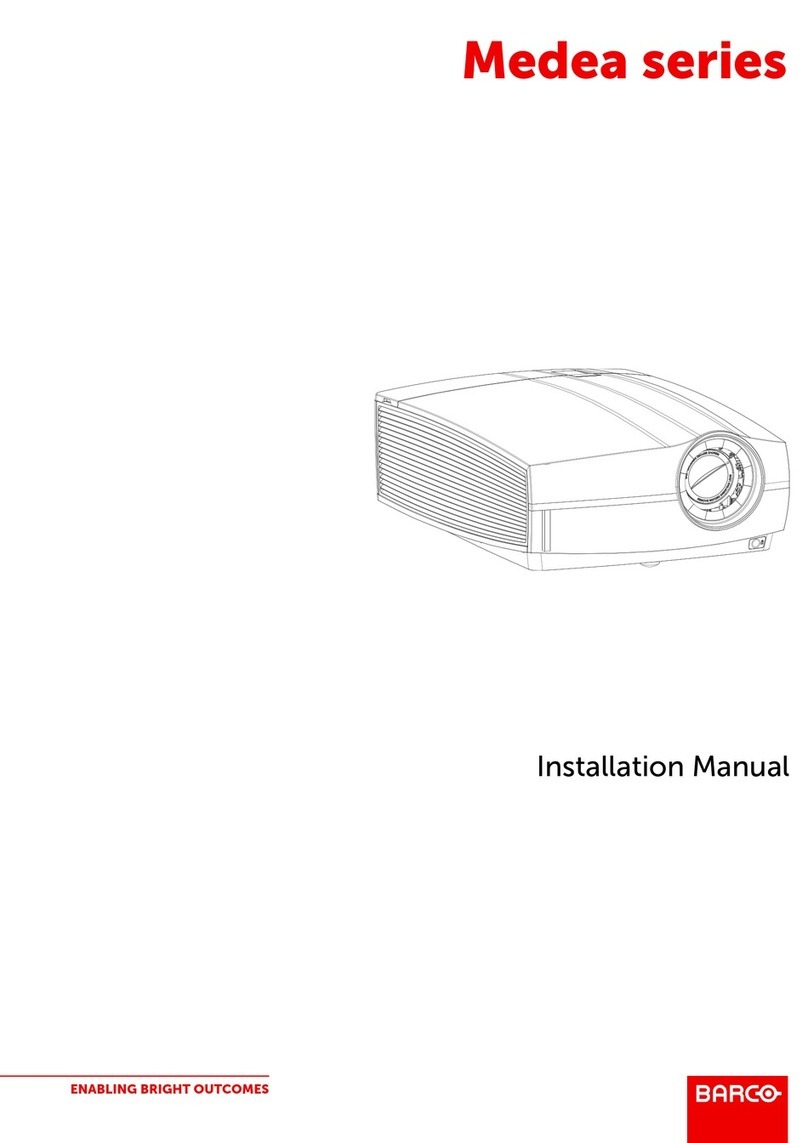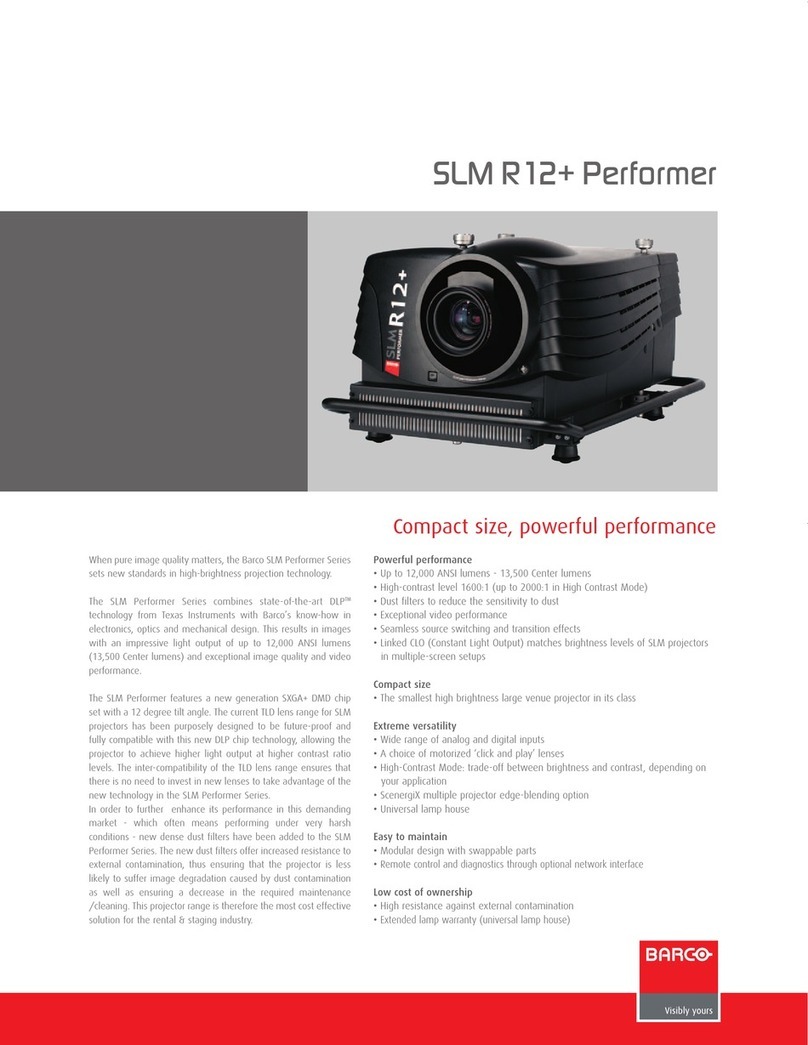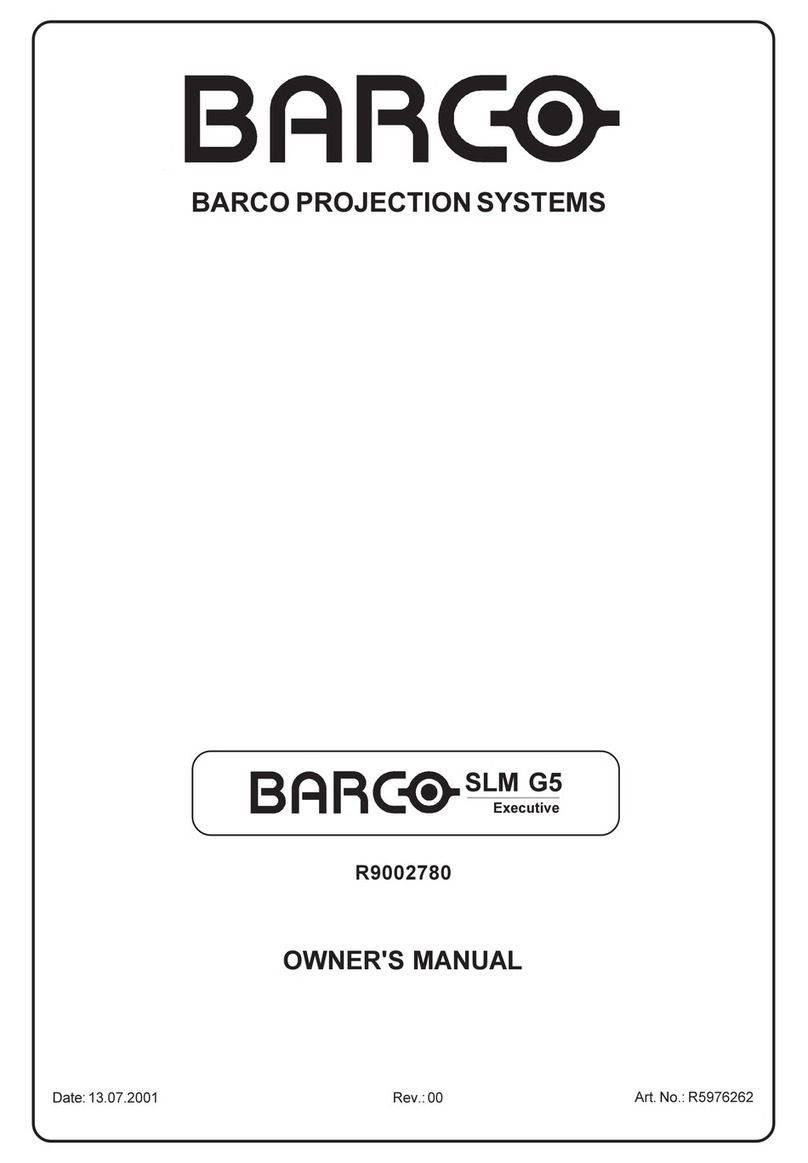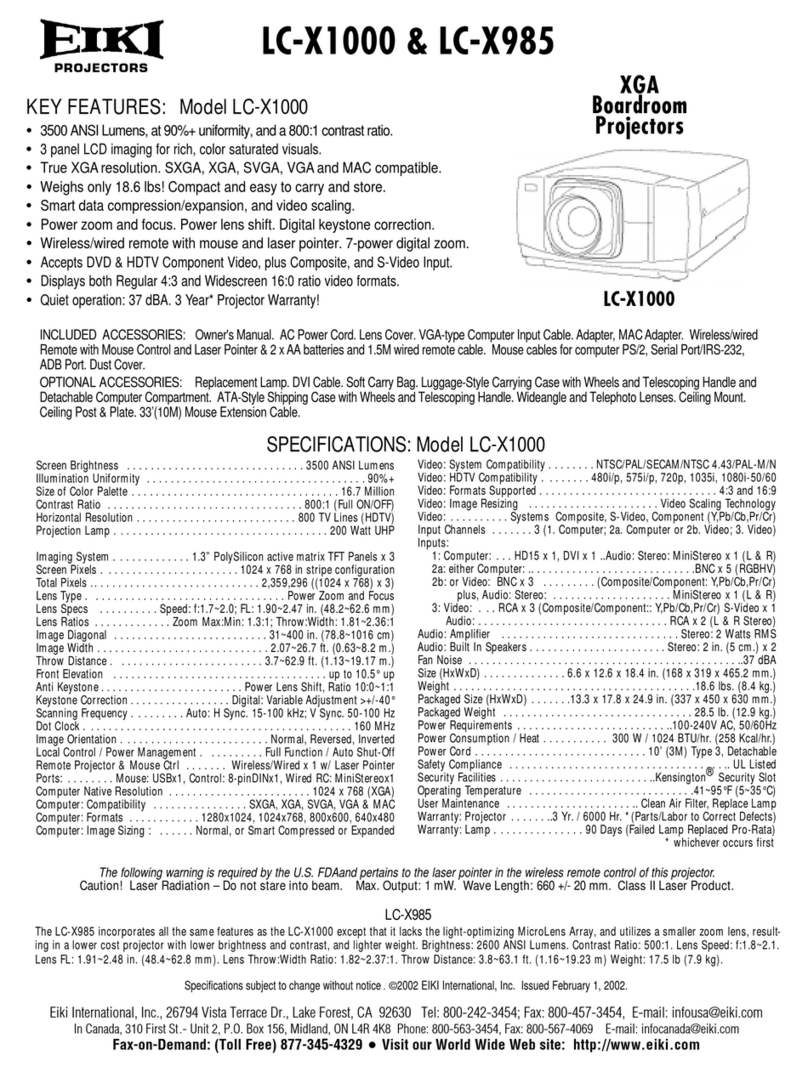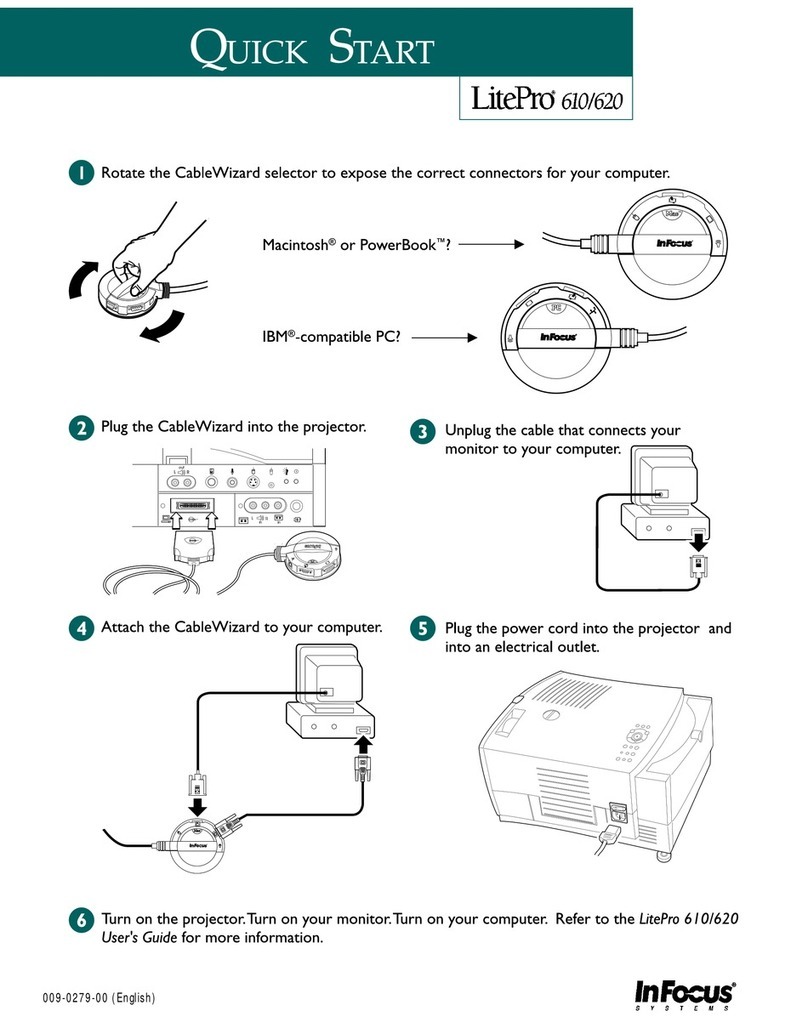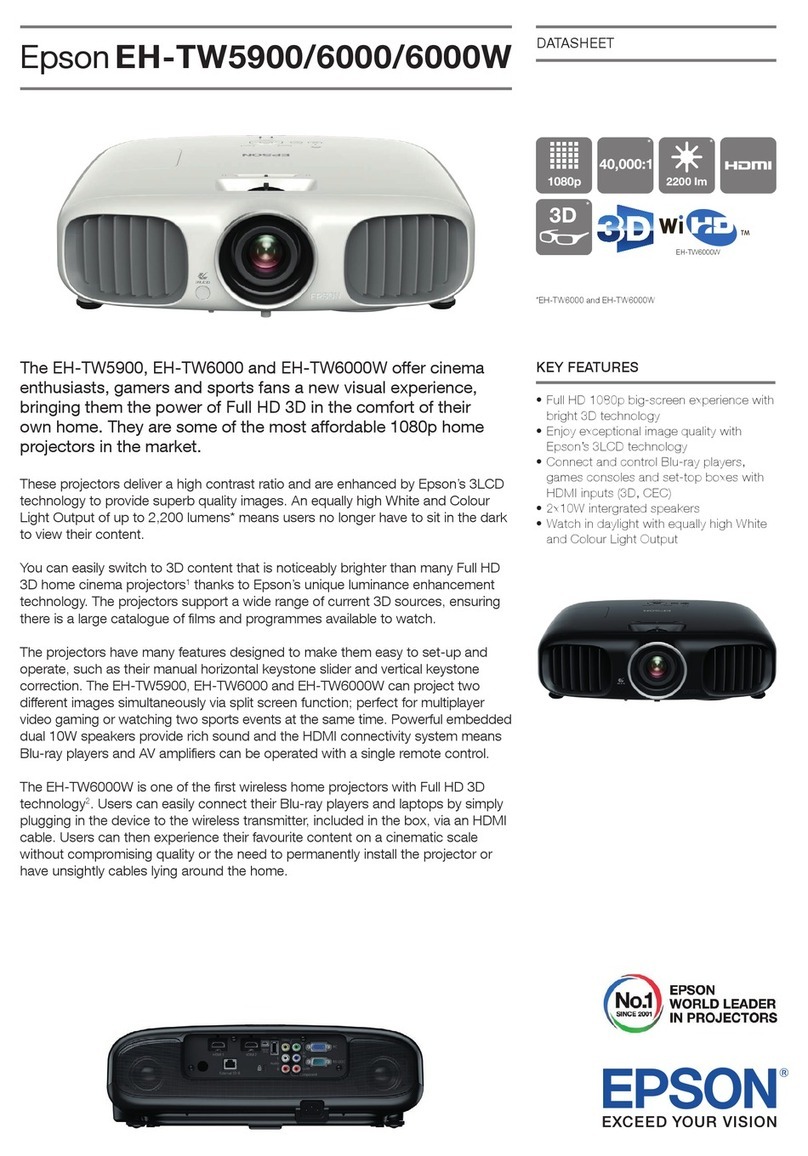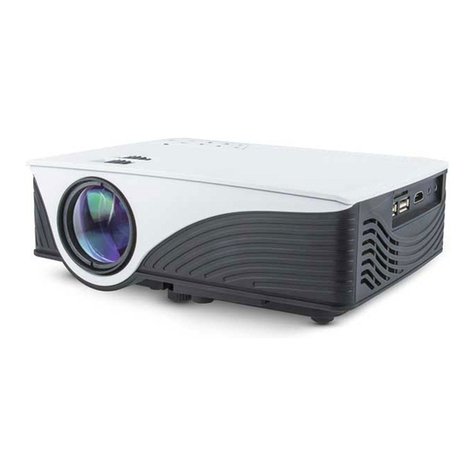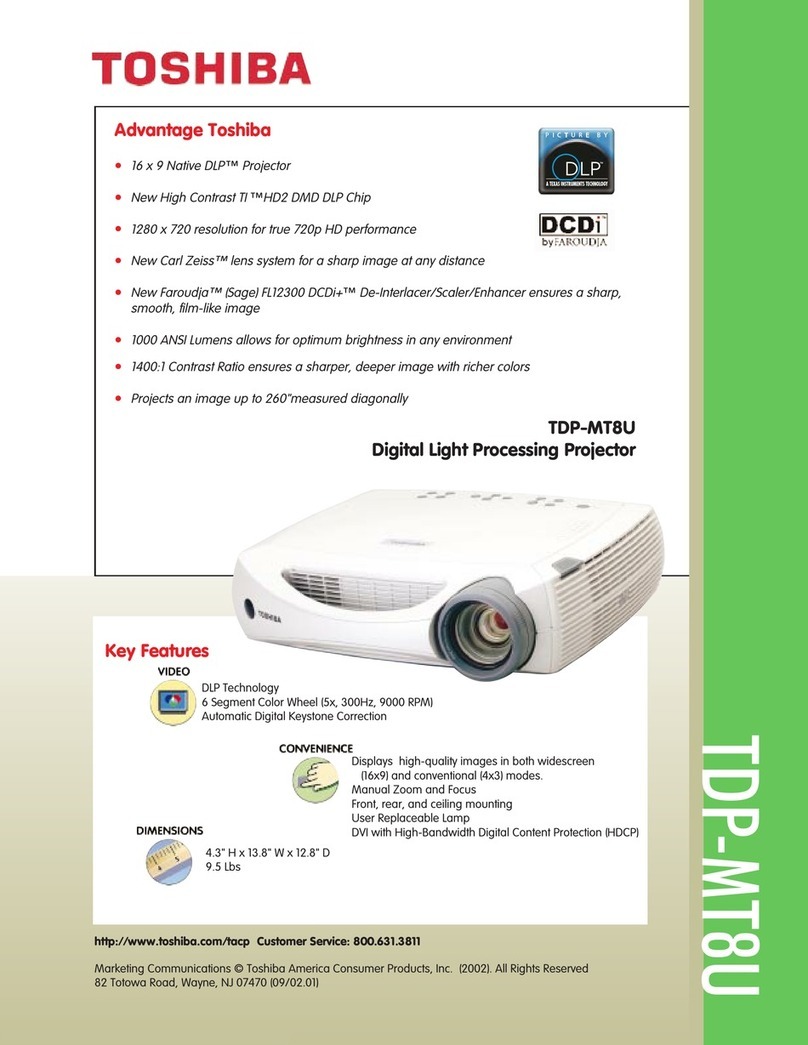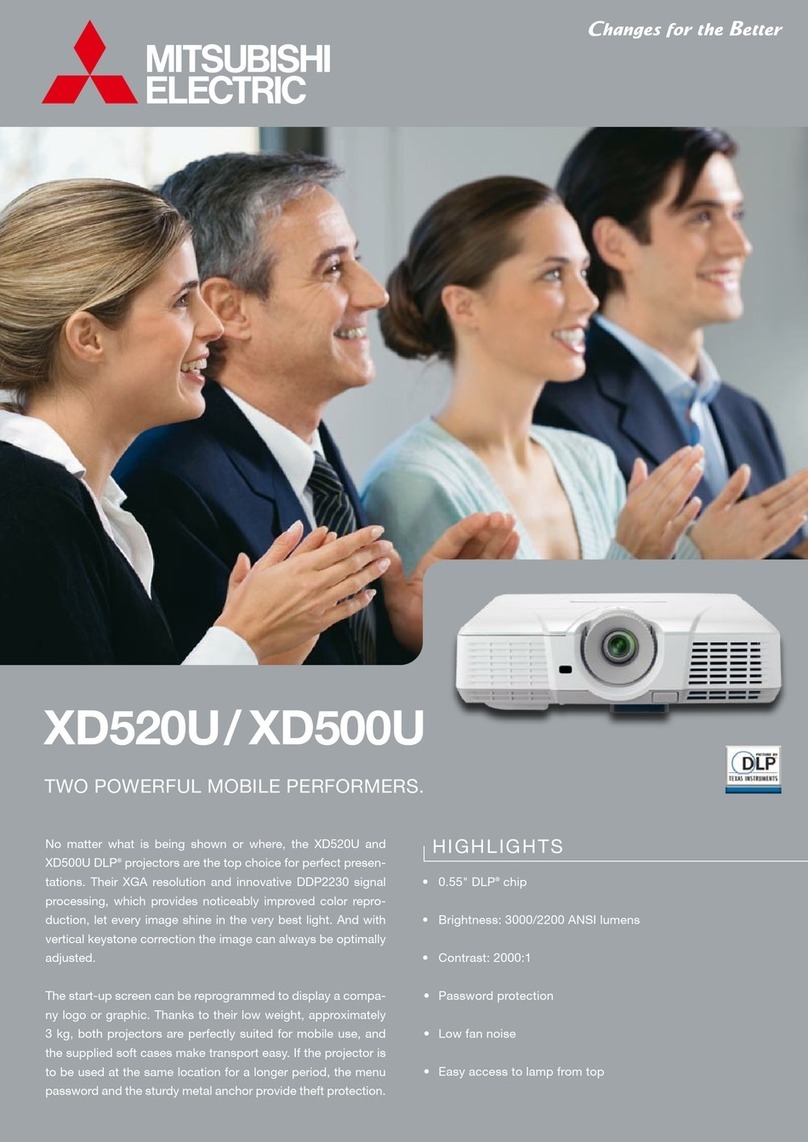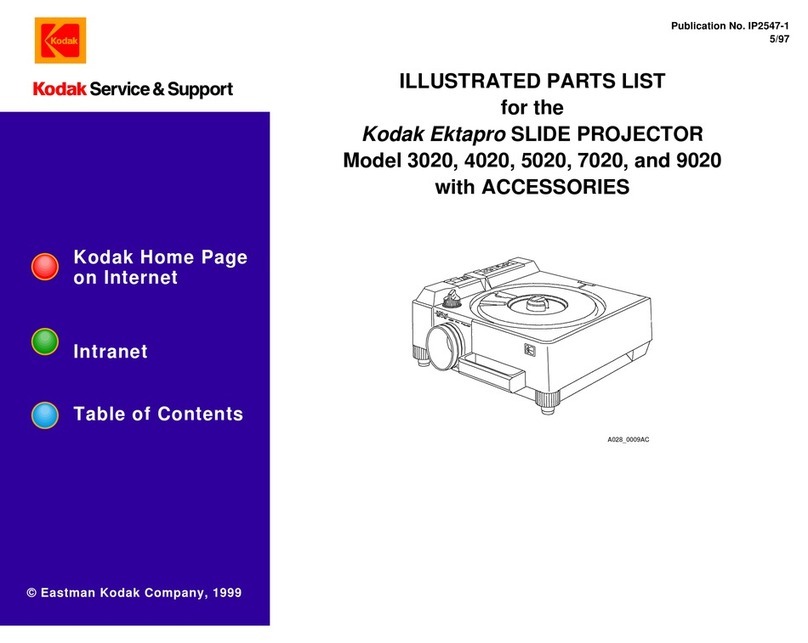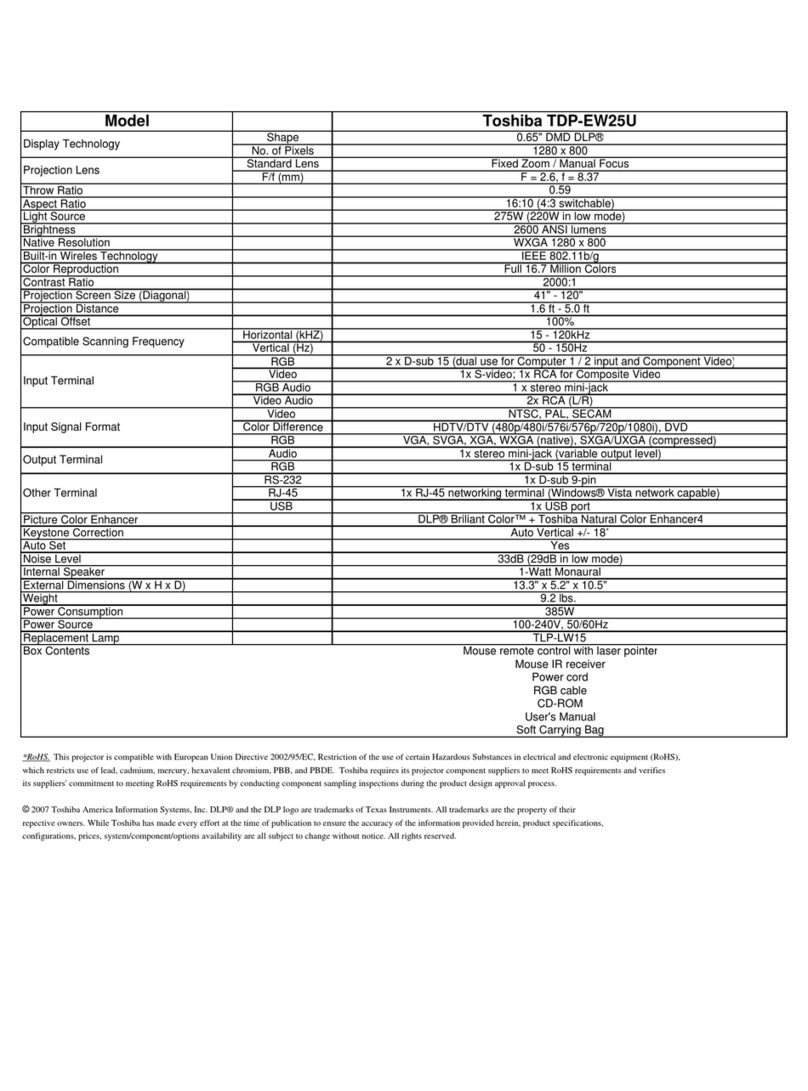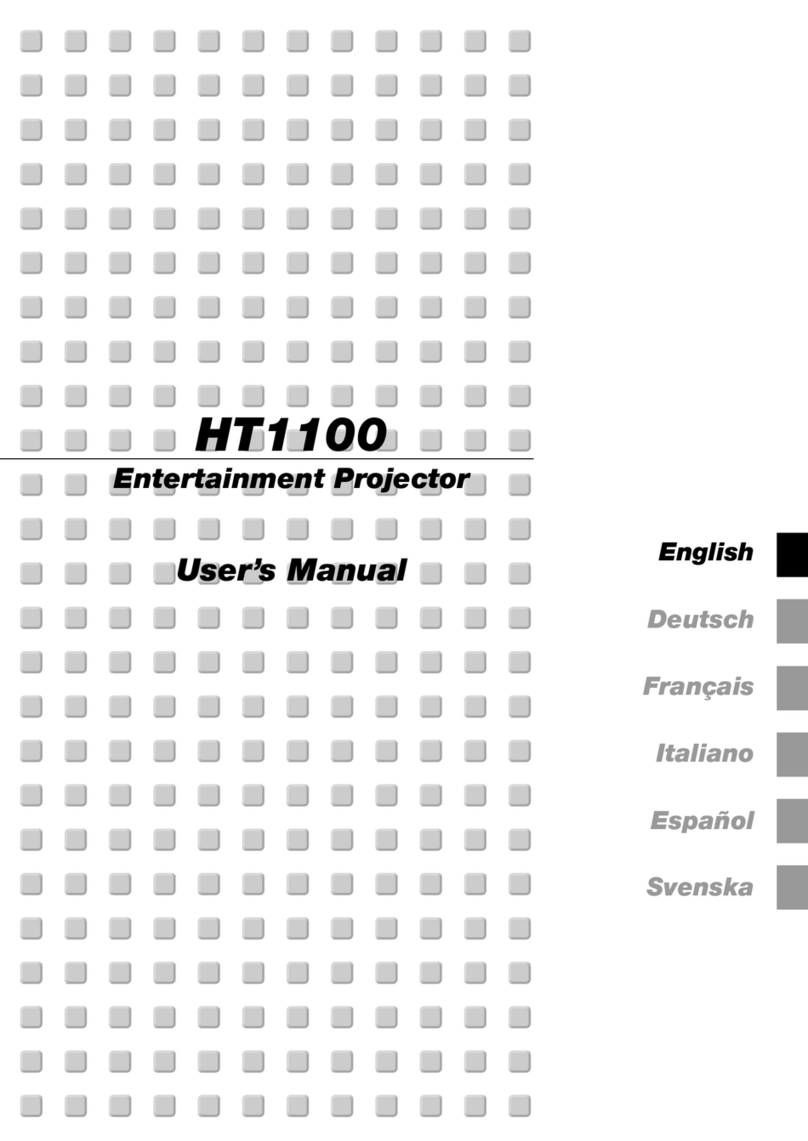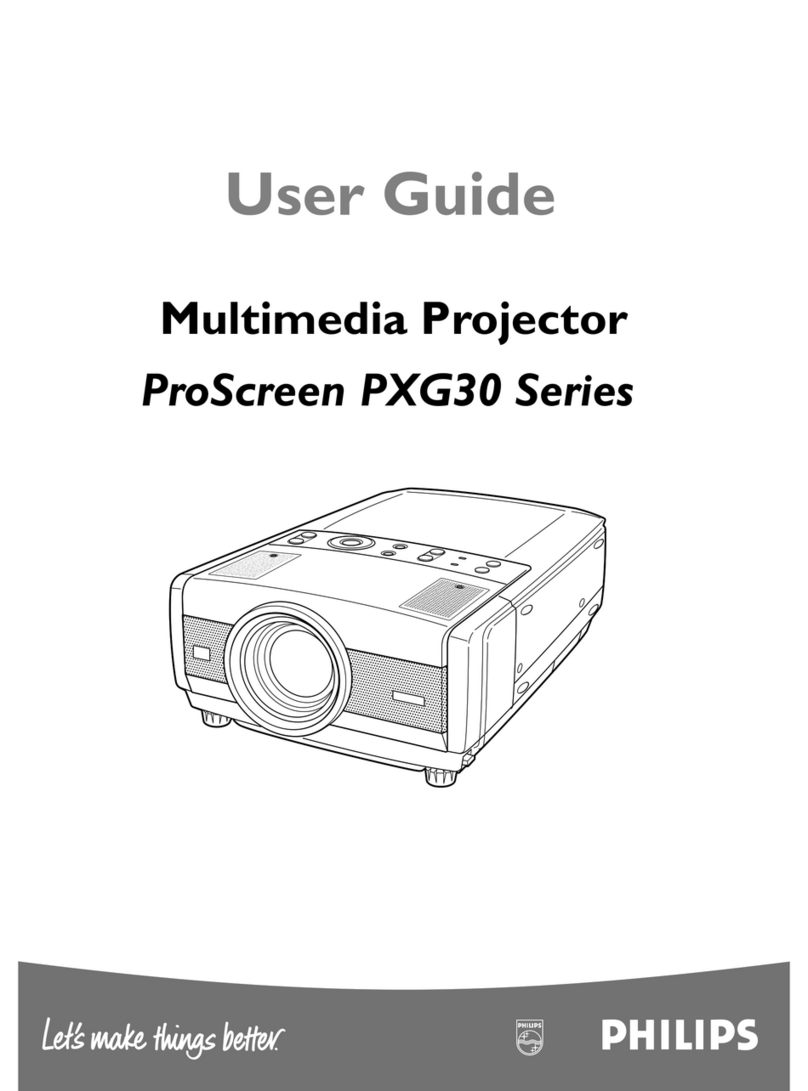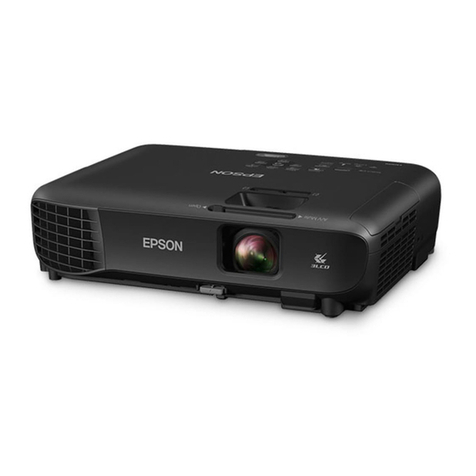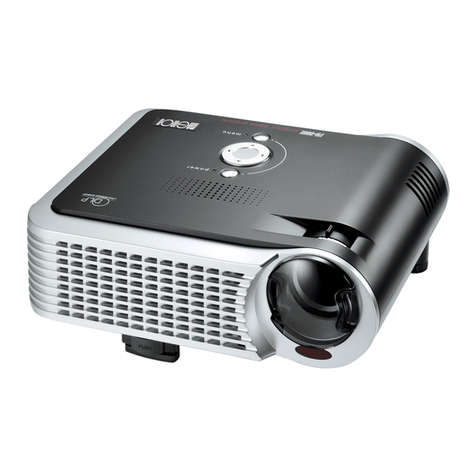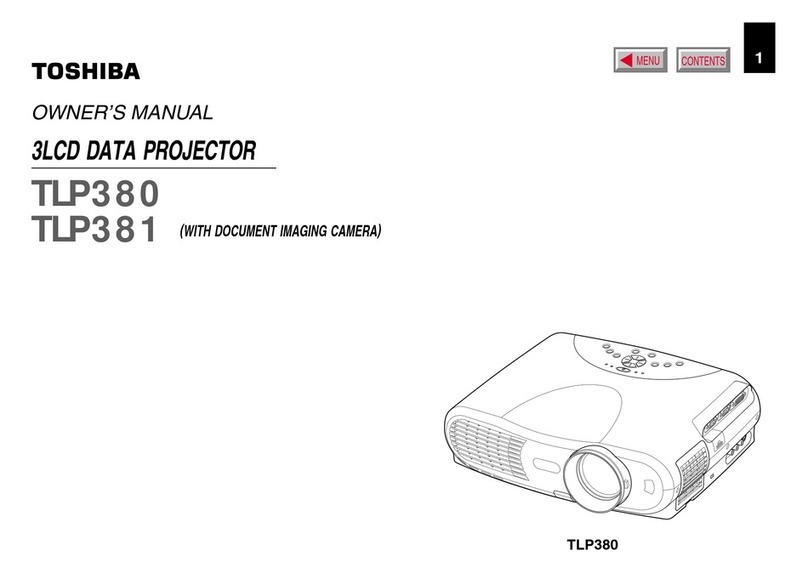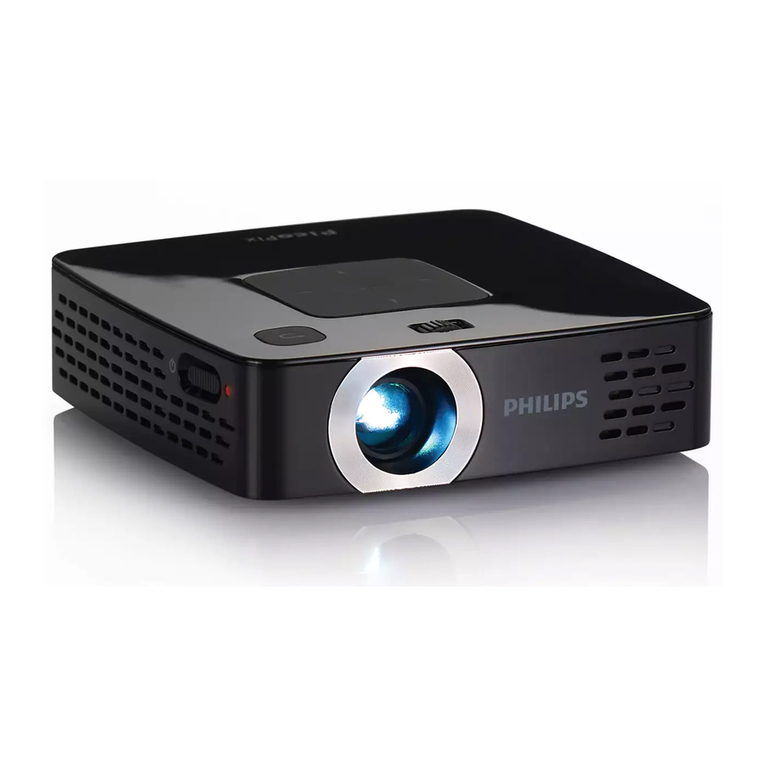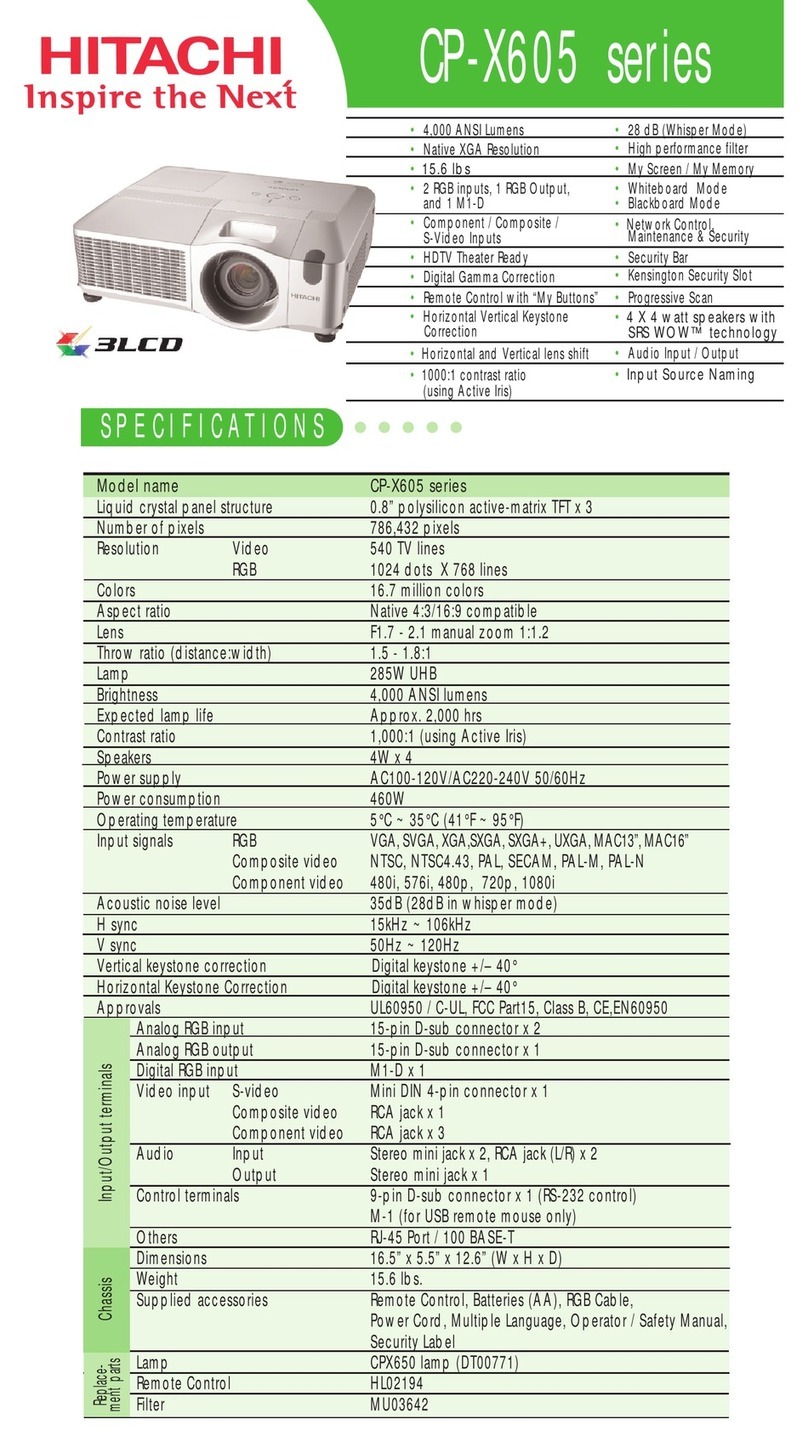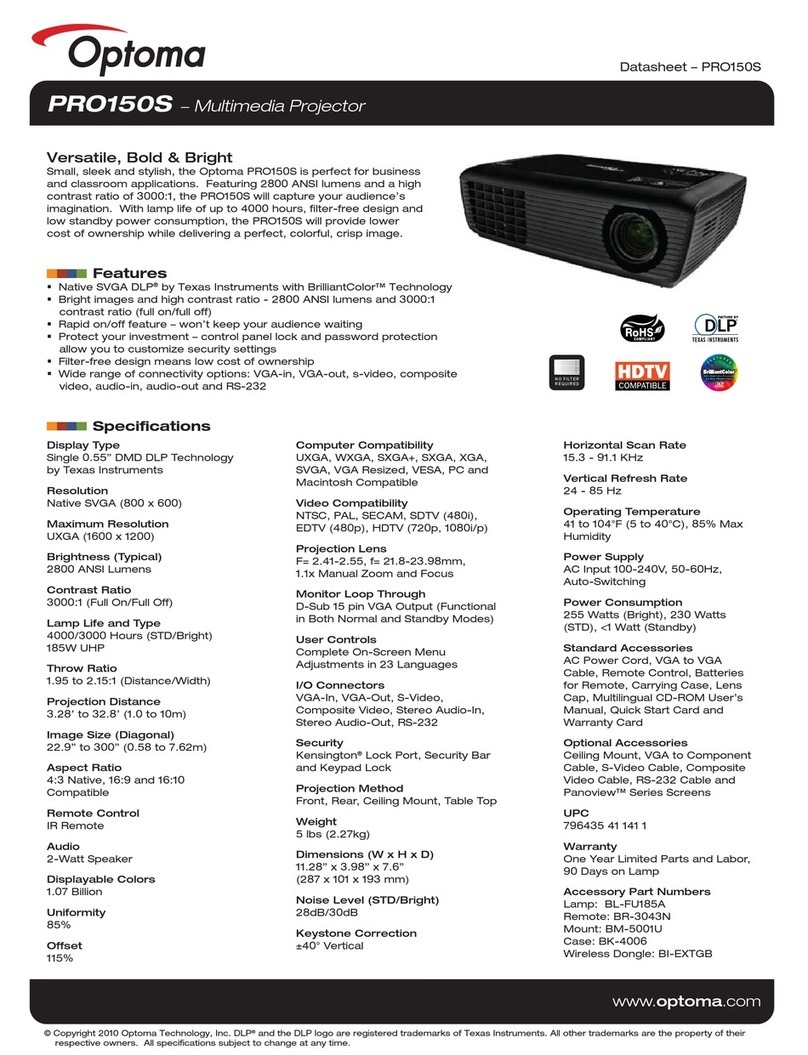
R5913197 /02 SP2K-S6
6.1 Introduction.........................................................................................................................................................................................66
6.2 Cinema controller of the projector .........................................................................................................................................67
6.3 ICP-D (Integrated Cinema Processor – Direct) .............................................................................................................69
7 ICMP-X............................................................................................................................................................................................................71
7.1 ICMP-X introduction......................................................................................................................................................................73
7.2 ICMP-X HDD .....................................................................................................................................................................................75
7.3 What are the possible HDD swaps ......................................................................................................................................77
7.4 ICMP-X communication and input ports ............................................................................................................................79
7.5 ICMP-X status LEDs .....................................................................................................................................................................81
7.6 ICMP-X HDD status LEDs .........................................................................................................................................................82
7.7 ICMP-X device certificate...........................................................................................................................................................84
7.8 ICMP-X configuration via Web Communicator...............................................................................................................86
7.9 ICMP-X reset.....................................................................................................................................................................................87
7.10 Obtaining the ICMP-X certificate............................................................................................................................................88
7.11 Removing a HDD from the ICMP-X......................................................................................................................................89
7.12 Installing a HDD into the ICMP-X...........................................................................................................................................90
8 Projector Power Cycle......................................................................................................................................................................93
8.1 Explaining the power states......................................................................................................................................................94
8.2 Switching the projector ON........................................................................................................................................................96
8.3 Switching the projector OFF ....................................................................................................................................................98
9 Connectivity ............................................................................................................................................................................................ 101
9.1 Connecting to the projector for the first time................................................................................................................. 102
9.2 Software update............................................................................................................................................................................ 103
10 Convergence ......................................................................................................................................................................................... 107
10.1 Opening the sealed compartment ......................................................................................................................................108
10.2 Closing the sealed compartment .........................................................................................................................................110
10.3 Convergence controls ................................................................................................................................................................113
10.4 Converging the blue pattern onto the red pattern.......................................................................................................115
10.5 Converging the green pattern onto the red pattern....................................................................................................117
10.6 Extenders for control knobs ....................................................................................................................................................119
11 Color calibration.................................................................................................................................................................................. 121
11.1 Calibration process..................................................................................................................................................................... 122
11.2 White point calibration............................................................................................................................................................... 123
11.3 Color gamut calibration............................................................................................................................................................. 125
12 Projector covers.................................................................................................................................................................................. 127
12.1 Removal of the left side cover ............................................................................................................................................. 128
12.2 Removal of the front cover......................................................................................................................................................129
12.3 Removal of the rear filter cover............................................................................................................................................ 131
12.4 Removal of the entire rear cover ........................................................................................................................................ 132
12.5 Removal of the right side cover .......................................................................................................................................... 133
12.6 Removal of the operator side cover ................................................................................................................................. 134
12.7 Removal of the top cover ........................................................................................................................................................135
12.8 Mounting the top cover ............................................................................................................................................................ 136
12.9 Mounting the operator side cover ......................................................................................................................................137
12.10 Mounting the right side cover ...............................................................................................................................................139
12.11 Mounting the rear cover .......................................................................................................................................................... 140
12.12 Mounting the rear filter cover.................................................................................................................................................141
12.13 Mounting the front cover .......................................................................................................................................................... 142
